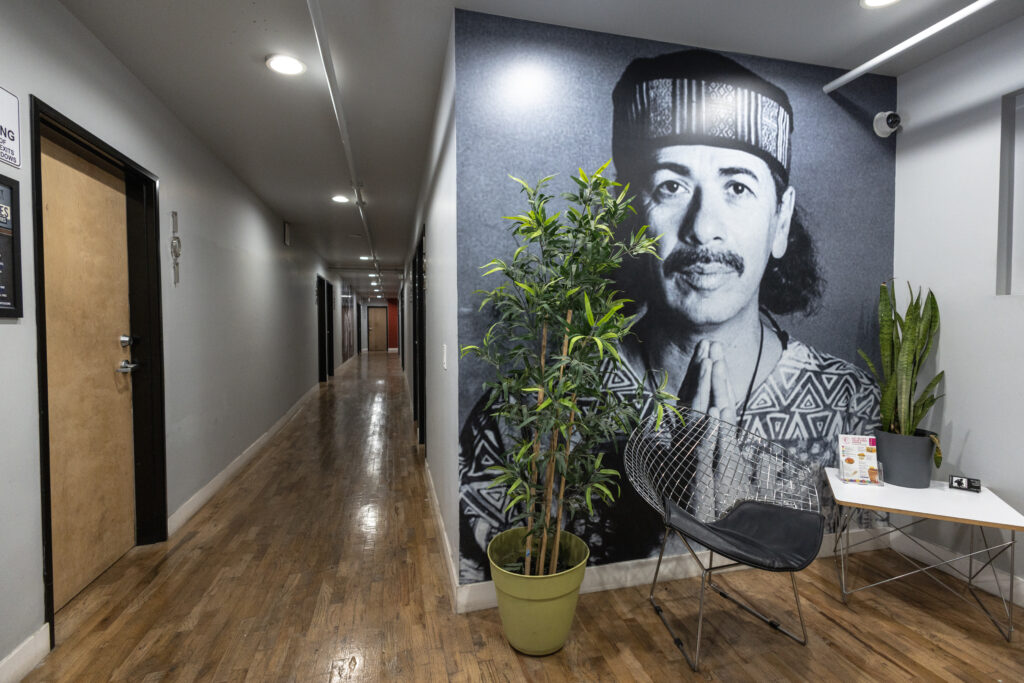
Crafting excellent rhyme schemes in music may appear effortless, but it actually requires a great deal of effort and dedication. Every songwriter knows the struggle of finding the perfect rhyme while effectively conveying their message with impact and precision. Let’s explore how to write lyrics using simple rhyme schemes.
The way words and music combine to create rhythm and structure in your lyrics is known as a rhyme scheme. A well-executed rhyme scheme helps develop and emphasize the song’s structure, draw attention to the central ideas being communicated, and introduce the tension and storytelling elements crucial to any great song. It enhances memorability, forging a strong emotional connection between the music, lyrics, and audience.
Rhymes also play a vital role in songwriting, assisting you in:
The structure of a rhyme scheme is created by having certain words in each phrase or section end with the same sound. This pattern is often shown using a lettering system, with the first two rhyming words labeled “A,” and the second two rhyming words labeled “B,” and so on, while words that do not rhyme are typically labeled as “X.”
For example, if you have a four-line chorus where the first and second lines rhyme with each other, and the third and fourth lines rhyme with each other, you would have an AABB chorus. On the other hand, if only the second and fourth lines rhyme, it would be labeled as an XAXA chorus.
The best way to become familiar with different rhyme schemes is to listen to your favorite music. You will start to recognize where the rhymes are placed and the impact they have on the listener.
One general rule is that the same rhyme scheme used in the first verse is repeated consistently throughout the song at specific intervals. This creates a sense of unity and cohesiveness, similar to how repeating chords for a chorus makes a piece of music feel complete.
There are various types of rhyme schemes, some more popular in specific musical genres or among certain bands. The dominant ones are four-line and six-line rhyme schemes, including:
These rhymes have identical vowels and ending consonants. While they create the strongest and most distinct rhymes, songwriters must be cautious about their usage, as they can become repetitive or reminiscent of nursery rhymes. Perfect rhymes are ideal for making strong statements, expressing certainty, or providing resolution.
Family rhymes involve the use of words with similar sounds, such as consonants and vowels that come from the same set. This means that two words may have a similar pronunciation, even if the letters used to spell them out are different.
Family rhymes can be used to add a subtle touch of interest to lyrics, as seen with the example of “shame” and “pain”. This type of rhyme is typically utilized to produce a smoother outcome, similar to that of a perfect rhyme.
Additive rhymes involve rhyming vowel sounds while adding extra letters or consonant sounds to the end of the second rhyming word. Examples include “year” and “feared.” Additive rhymes are weaker or softer, allowing more room for creativity in the lyrics.
Similar to additive rhymes, subtractive rhymes involve removing consonant sounds. For example, “plane” and “rain” demonstrate a subtractive rhyme. Subtractive rhyme creates a sense of instability or change within the lyrics.
Assonance occurs when vowel sounds rhyme, but the consonants do not. For instance, “tide” and “life” create assonance. This type of rhyme establishes a connection between two concepts while keeping the meaning open-ended. It is suitable for expressing questioning, doubt, and uncertainty due to its more chaotic nature.
The least powerful type of rhyme consists of words with dissimilar vowels but the same consonants. This offers authors the greatest scope when creating verses. Examples of consonance rhymes include “blue” and “kite,” “fond” and “ground,” and “sent” and “paint.”
Now, let’s explore the most popular rhyme schemes in songwriting:
The AABB rhyme scheme is simple and impactful, adding a sense of predictability. The song “Alphabet Aerobics” by Blackalicious provides a clear example of this rhyme scheme:
My mind makes marvelous moves, masses (A)
Marvel and move, many mock what I’ve mastered (A)
Niggas nap knowin’ I’m nice naturally (B)
Knack, never lack, make noise nationally (B)
This rhyme scheme also creates a high-impact effect, linking lines and concepts throughout the lyrics. The song “Attending a cousin’s birthday party” by Drug Church showcases this rhyme scheme:
Some kids get ugly fast (A)
Other kids were born all bad (B)
Some kids stay life long trash (A)
Most kids they learn from dad (B)
Known as a monorhyme, this rhyme scheme involves all the last words rhyming. It is often used to build tension in a song. While it can be challenging to execute without losing its impact, a well-crafted monorhyme creates a powerful effect, particularly in hip hop and rap. The song “Hell” by A$AP Rocky demonstrates this rhyme scheme:
Ride with the pretty nigga, hoopty, no chauffeur (A)
Paint lookin’ like a drippin’ smoothie, no coaster (A)
The game’s full of posers, big dog bulldozer (A)
Pop up on ’em like toasters, wake ’em up like Folgers (A)
Also known as an envelope rhyme, the second and third lines rhyme, while the first and fourth lines enclose the lyrics with a different rhyme. The song “Super disco breakin’” by Beastie Boys illustrates this rhyme scheme:
Sometimes I like to brag (A)
Sometimes I’m soft spoken (B)
When I’m in Holland, I eat the pannekoeken (B)
The worm is the spice, you bring the sauce (A)
You can kiss my ass, you funky boss (A)
The XAXA rhyme scheme offers more unpredictability, allowing greater freedom for songwriters. Gucci Mane’s verse on “Trap House 3” provides an example of XAXA lyrics:
I told partner bring the presser, huh (X)
Apply some pressure to the jack, yeah (A)
I got a thousand keys uncut, nigga (X)
Guaranteed I make this money stack, nigga (A)
In conclusion, by understanding and utilizing various rhyme schemes, songwriters can enhance the impact and cohesiveness of their lyrics, creating memorable and emotionally resonant songs.
Lastly, if you are serious about your music, and you are looking for a music rehearsal space, Lockout Music Studios may be the solution you have been looking for.
In addition to having locations in California and Nevada, Lockout also offers rehearsal rooms for a variety of needs from live bands, solo artists, DJs, music producers, and music teachers. All rooms are acoustically correct and available 7 days a week, 24 hours per day for use as a practice room, recording studio, art studio, photography studio or private creative office space.

Just Listed! Our Sacramento office features top-of-the-line facilities, private rehearsal rooms, and a lounge area for artists to take a break!
With 24-hour access, Lockout Music Studios provides a professional and comfortable environment for musicians to practice, perform, and record their music, allowing them to reach new heights in their craft.